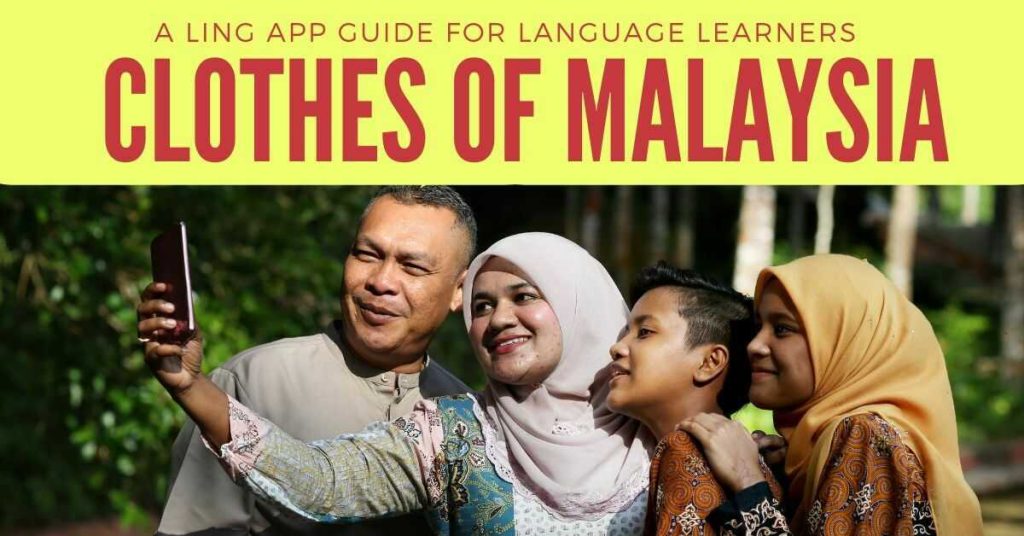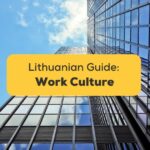This is another chapter of enriching your knowledge of culture and language! This time we will be looking into FASHION. Well, not exactly runway models, but Malay vocabulary on clothes and anything related to it. Before learning what these names are called in Malay, it is crucial to know some of the clothes of Malaysia. To be specific, the traditional clothes of Malaysia.
Let me refresh some of your memories of Malaysia. Malaysia is a beautiful multiracial and multicultural country. Some of the ethnic groups we have are Malays, Indian, Chinese, and non-Malay indigenous groups like the Dayak Tribe, the Iban Tribe, The Kadazan Tribe, and many more. Naturally, each of them has its own traditional clothes. This post would be extremely long if I have the chance to showcase every single traditional clothes, hence why I have to pick some important ones to share with all of you.
Clothes Of Malaysia:
First and foremost, let’s learn the basic words. ‘Clothes’ in Malay is called pakaian; while ‘traditional clothes’ can be translated into pakaian tradisional. You will see baju being repeated many times in this article; baju simply means ‘shirt’. Now, moving on to the clothes of Malaysia.
Malay
The Malay folk in Malaysia have several traditional clothes that are worth taking note of. When talking about Malay, it is important to know that Malays were not always Muslim. Islam is not always popular in this land of Malayans. So Malays have traditional clothes that they used to wear before and after their conversion to Islam.
Baju Kurung
The current traditional dress for women in Malaysia is called Baju Kurung. It can be considered the most popular traditional clothing. The traditional Baju Kurung is a long-sleeved, knee-length (or sometimes shorter) blouse, paired with a long skirt that is called kain. This garment started to gain popularity after the Malay women needed to wear something more modest and elegant as they convert to Islam.
Some of the Baju Kurung variations include Baju Kurung Kedah, Baju Kurung Pahang, Baju Kurung Pesak, Baju Kurung Riau, and Baju Kurung Moden. The Baju Kurung is now the girls’ uniform for schools in Malaysia as well as formal wear for the government sector.
Before Islam, Malay women simply dorn a sarong that was wrapped around the body and tied above the chest. This act is called ‘kemban‘; Malaysians still use the word kemban as the act of covering one’s body by tieing a cloth or towel above the chest.
Baju Kebaya
Malay women also wear Baju Kebaya, a long-sleeved tight-fitting two-piece dress. The house is “button down” and made of light fabric mostly bright and full of floral patterns, sometimes the edges and sleeves are decorated with floral embroidery. It is usually paired with a sarong. This attire is very famous during the 70s and 80s and it is also the traditional wear of the Chinese Peranakan, known as Baba & Nyonya. Peranakan refers to the Chinese immigrants or early settlers who were likely to take local wives. The easiest way to understand the Baba & Nyonya community is to regard them as Malaysian Chinese who practices the Malay culture.
Tudung
Tudung in today’s context is simply a hijab or a headscarf. A hijab is something Muslim women cover their head, neck, and chest with, and it is called tudung in Malay. Of course, the one traditional to Malay women is called Tudung Bawal, a square scarf, folded into a triangle and placed above the head, to be pinned or tied under the chin. Of course, there are others, like the selendang, a piece of the shawl to sling around the head and neck, but those or mostly evolution of fashion and influenced by other country’s trends and fashion.
Baju Melayu
The traditional attire for Malay men is called the Baju Melayu. They do not wear this traditional attire daily, but usually, you would see men wear it during special occasions like Hari Raya, weddings, award ceremonies, and other formal occasions. Usually, due to comfort men wear only the long-sleeved top and its trousers only, but the complete look includes a piece of cloth or sarong being wrapped around the hips as well as a traditional Malay black cap called songkok.
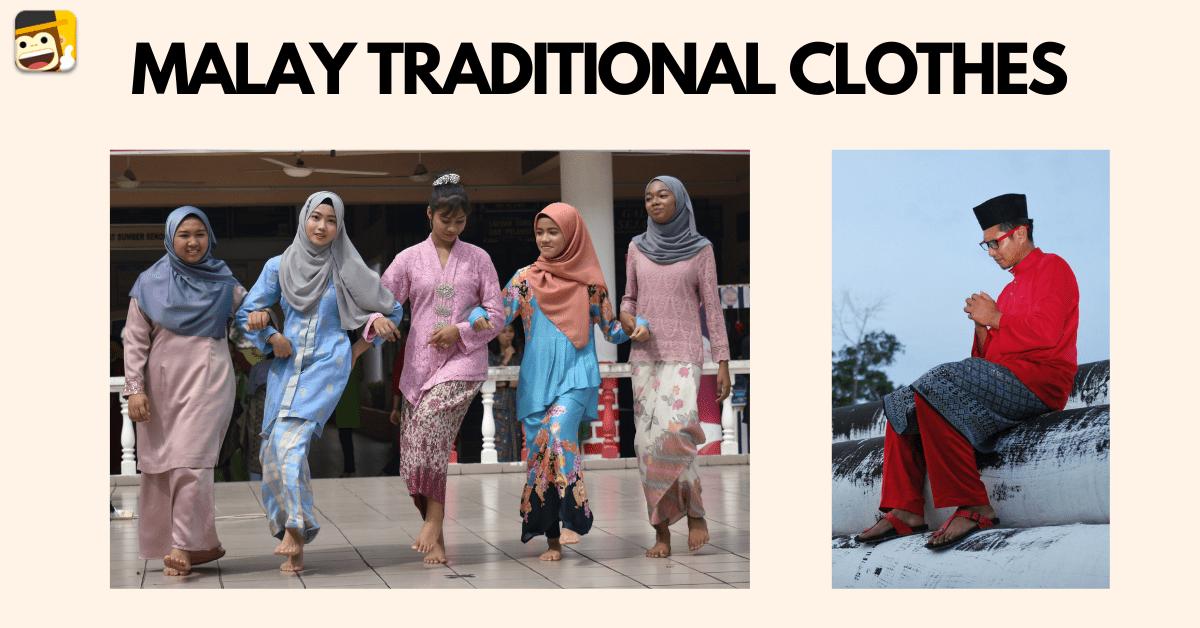
Chinese
Cheongsam
Malaysian Chinese are descendants of Chinese from China, and they could not help but to retain some of their cultures from the mainland and mash it with Malaysian features and culture. We have discussed the Chinese women of the Baba & Nyonya community wearing Kebaya, but Chinese women in Malaysia particularly adorn the one-piece dress called Cheongsam during festivals and important events. Cheongsam is a long silk dress and has a high collar and a diagonal clasp.
Cheongsam itself is said to mean long dress, hence its length is usually long with slits on both sides. However, it is also common to see women wear Cheongsams of a shorter length.
Tang Suit
It is rare for Malaysian Chinese to put on any type of traditional attire. During the Chinese New Year in Malaysia, usually Chinese men wear collared shirts or button-downs in red. Nevertheless, they do have the traditional costume, Tang Suit, a jacket-type suit with a high collar. If you are a fan of Chinese history drama then you would probably recognize this attire.
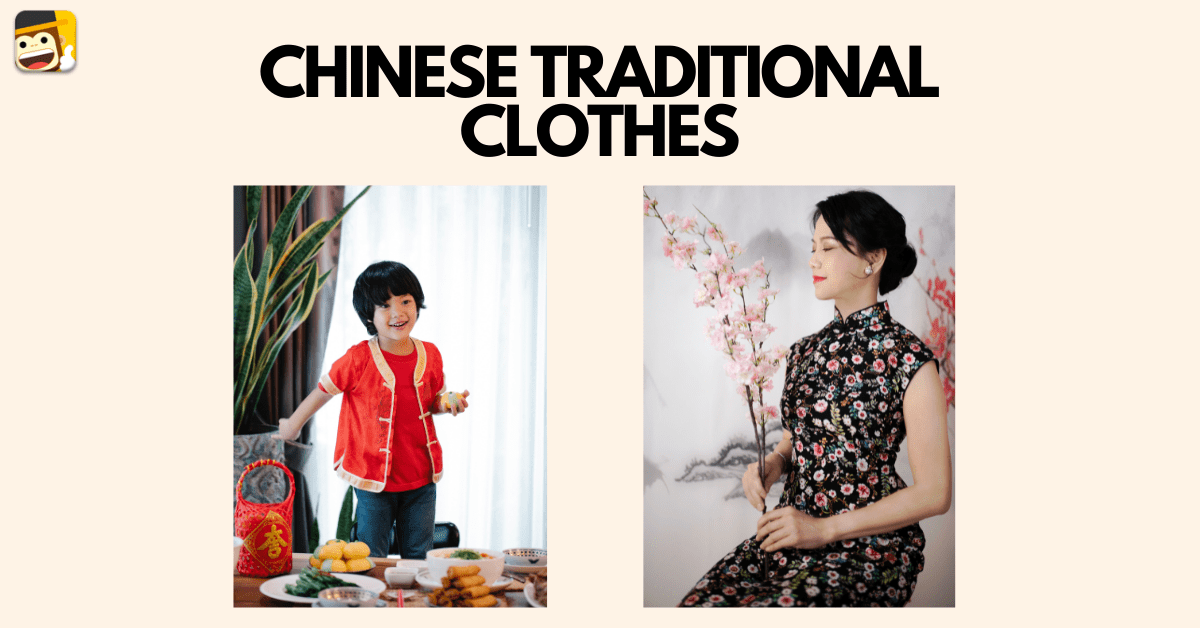
Indians
Indians in Malaysia were mostly descendants from India. They have passed down and retain most of their traditions from India. The majority of the Indian immigrants were from West India but many North Indian cultures can be found in Malaysia too.
Sari
Malaysian Indian women wear the Sari (or Saree), a six-yard piece of cloth, draped and wrapped around the body and it is styled with a piece of a simple short-sleeved blouse under the Sari.
Although the younger generation would only wear Sari during festivities, some of the older generations actually prefer to be dressed in Sari all the time.
Among the youngsters, the Salwar Kameez and Lengha, an article of traditional clothing from north India is more popular. Salwar Kameez is a long tunic, paired with a pair of trousers and a shawl. The Lengha is an ankle-length skirt that is usually worn with a matching short blouse. All of these traditional clothes come in simple everyday designs or are full of decorations made of silver and gold thread and beads.
Kurta
For the festivities, Indian men wear Kurta, a knee-length, long-sleeved shirt paired with a pair of pants. The Indian traditional clothes that are found in Malaysia also include Sherwani, Lungi, and Dhoti.
Lungi / Kain Pelekat
The Lungi in Malaysia is very famous. It is worn by almost every Malay and Indian father every time they come back from work. It is almost like a sarong, but with wide lines as patterns. The Malays call it by a different name, Kain Pelekat.
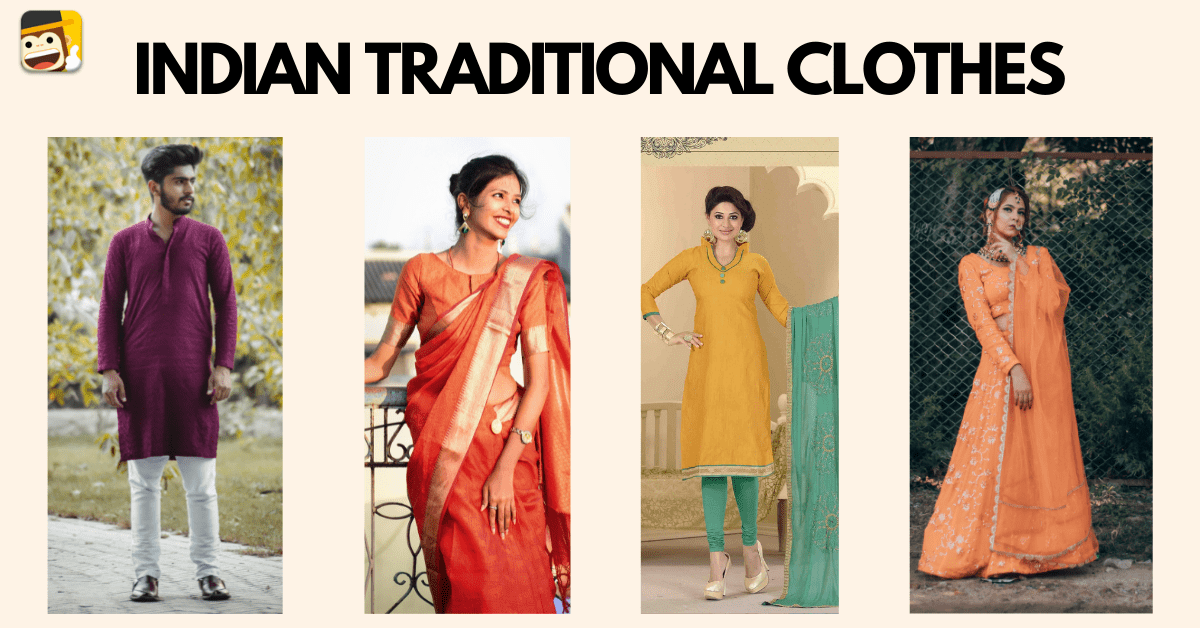
Kadazan
Kadazandusun is the name of two indigenous tribes – Kadazan and Dusun- of Sabah, a state in Malaysia. They are considered indigenous to the land and have their own special rights.
The women’s traditional costume of the tribes is known as Sinuangga. It is a one-piece black dress (made out of velvet or silk), styled with gold embroidery and a chain tied around the waist made out of silver coins. They also wear a headpiece called Siung made from bamboo strips.
The men of Kadazan wear the male version of Sinuangga called Gaung and it is accompanied by Siga on the head.
These are some of the traditional clothing found in Malaysia, but the ones mentioned here are just a small portion, I was not joking when I say it is multicultural. The native people of Malaysia all have their own traditional clothes; not to mention other minor ethnicities that have been around in Malaysia for some time. Now that you have been educated about the culture, let’s learn a new Malay vocabulary!
Clothing Related Vocabulary: Malay
| Malay | English |
|---|---|
| Baju | Shirt |
| Pakaian | Clothes, clothing |
| Seluar | Pants/trousers |
| Seluar pendek | Shorts |
| Kain | Skirt / cloth |
| Gaun | Gown |
| Lengan Panjang | Long-sleeved |
| Lengan pendek | Short-sleeved |
| Jeans | Jeans |
| Tudung | Shawl/ headpiece/ Hijab |
| Baju Mandi | Swimwear |
| Baju Sukan | Sportswear |
| Bedak | Powder |
| Gincu | Lipstick |
| Poket | |
| Butang | Button |
| Jaket | Jacket |
| Jubah | Abaya / Thobe |
| Jam | Watch |
| Cermin Mata | Glasses |
| Rantai | Necklace/chains |
| Gelang | Bracelet / Bangles |
| Cincin | Ring |
| Selendang | Shawl/scarf |
| Tali pinggang | Belt |
| Tali leher | Necktie |
| Getah rambut | Scrunchie |
| Klip rambut | Hair clip |
| Subang / anting-anting | Earings |
| Stokin | Socks |
| Kasut | Shoes |
| Selipar | Slippers |
| Kasut Tumit Tinggi | High heels |
| Tali Kasut | Shoelace |
Learn More Malay Words
There is a Malay proverb that goes as follows:
Tak kenal maka tak cinta.
This proverb can be translated as: “you can’t love what you don’t know”. It is hard to learn a new language but to make your learning experience colorful, it is important to know more about the language you are learning about. That is why Ling App has your back! You can learn Malay through the app itself and immerse yourself in Malaysian culture throughout posts.
But why stop there? This is your chance to utilize Ling App to the fullest and be the next polyglot! The app offers more than 60+ languages that can help you with your journey, even non-mainstream languages.
